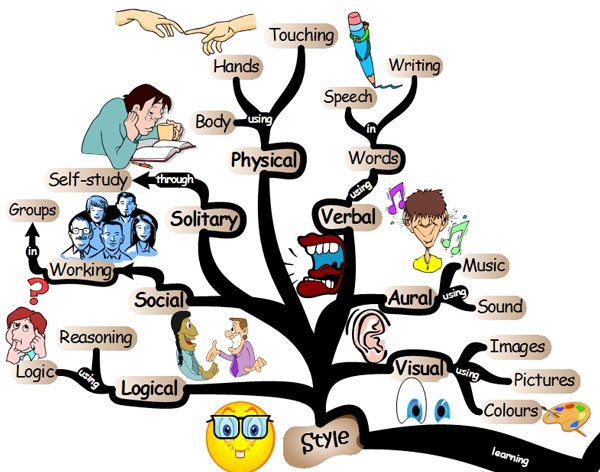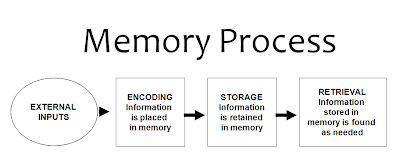Learning:
Learning is an experience in which information is taking in the process of listening, hearing or doing something, learning can be defined as the process to behavioral change, or as in the way we learn, we change the way we perceive the environment, the way we interpret the incoming stimuli, and therefore the way we interact, or behave.
Classical conditioning:The response in a stimulus-response chain that is not naturally occurring, but rather has been learned through having being paired with another stimulus.
Operant Conditioning. How we respond to what is presented to us in the environment. It can be thought of as learning due to the natural consequences of our actions.
Memory:
I know for a fact both these animals put together probably have a better memory than me!
Memory involves a process of obtaining information and storing it over time so that it will be available when needed.(Solomon et al)
Below shows a diagram on how the memory process works, this would involve learning from external inputs which then goes to the encoding stage; this is the process used to transform information so that it can be stored, in order to transform the data a meaningful form or association with an existing memory, an image or sound. Next stage is storage, which means holding onto the information, it means that a physiological change must occur for the memory to be stored. The final process is called retrieval, which is bringing the memory out of storage and reversing the process of encoding. this means returning the information to a form similar to what was stored.
Memory systems:
Solomon explains that there are three types of memory systems which play a role in processing information, these are sensory memory, short term memory and long term memory.
This shows the relationship with the memory system.
This shows the relationship with the memory system.
Sensory memory stores information for a temporary period of time and information is received through senses, its based on what our senses pick up and depends whether we choose to retain this information which is then stored in short term memory.
Short term memory,is a type of memory which only stores the information for a short period of time,storing information is limited.
Long term memory, is based on storing the memory for a long term period. In order to retain the memory from the short term memory constant rehearsal is needed. This could be done by relating to other information already in the memory. An example of how marketers do so is by using catchy slogans in which gets the consumers repeating.
This is an example of a kitkat advert in which their slogan 'Have a break, have a kitkat'
This is an example of a kitkat advert in which their slogan 'Have a break, have a kitkat'
is a catchy slogan which gets consumers repeating therefore stays in their long term memory.
The hovis advert:
The Hovis advert shows Britain's historic events experienced by Britain during the company's existences. The scenes are set in the time of World War I, the suffragette movement, the first motor car, World War II, the Queen's coronation in 1953, the Swinging Sixties, England winning the 1966 World Cup, the 1980s miners' strike and the Millennium celebrations.
It shows a boy buying a loaf of bread 122 years ago, and going through the different eras with his clothes changing to fit the styles of the time. The ad ends with the boy finally bringing the loaf home to his mother, with the iconic tagline: "As good today as it's always been". This a good example of an advert showing the memories of the time Hovis has been around
It shows a boy buying a loaf of bread 122 years ago, and going through the different eras with his clothes changing to fit the styles of the time. The ad ends with the boy finally bringing the loaf home to his mother, with the iconic tagline: "As good today as it's always been". This a good example of an advert showing the memories of the time Hovis has been around
Nostalgia:
Solomon explains Nostalgia as a bittersweet emotion, where the past is seen as sadness and longing. Advertisers use this as a source to the stimulus so they can create a response as it involves bringing back memories for the consumer and their youthfulness.
This mood board shows a few of I grew up watching I have many favorites, I have memories of watching and being around that even if I watched them or heard about them it Id be happy remembering them its a sadness because its longing for your favorites which you don't really have its in the past.
Skoda Advert:
This Skoda advert is good example to show the effectiveness of using music to create nostalgic adverts, as the advert uses the soundtrack of Julie Andrews singing My Favorite Things while a group of bakers are making a car. It goes really well the songs a classic as most people growing up have watched the movie Mary poppins hearing the music makes them look back at the memories. This is actually one of my favorite adverts because of the choice of the music.
Solomon explains Nostalgia as a bittersweet emotion, where the past is seen as sadness and longing. Advertisers use this as a source to the stimulus so they can create a response as it involves bringing back memories for the consumer and their youthfulness.
Here is a link to an article talking about how nostalgic adverts work with certain brands http://www.campaignlive.co.uk/news/883332/Close-up-Advertising-welcomes-new-age-nostalgia/ Nostalgic adverts work best when they relate to the brands values, more brands are trying to bring back the past memories by putting clips from previous adverts this would also cut down expenses.
This mood board shows a few of I grew up watching I have many favorites, I have memories of watching and being around that even if I watched them or heard about them it Id be happy remembering them its a sadness because its longing for your favorites which you don't really have its in the past.
Skoda Advert:
This Skoda advert is good example to show the effectiveness of using music to create nostalgic adverts, as the advert uses the soundtrack of Julie Andrews singing My Favorite Things while a group of bakers are making a car. It goes really well the songs a classic as most people growing up have watched the movie Mary poppins hearing the music makes them look back at the memories. This is actually one of my favorite adverts because of the choice of the music.







